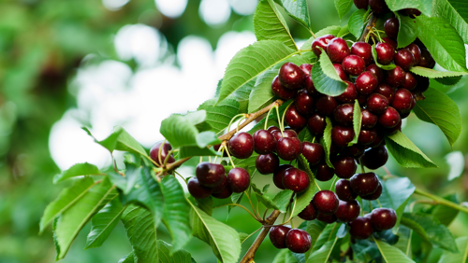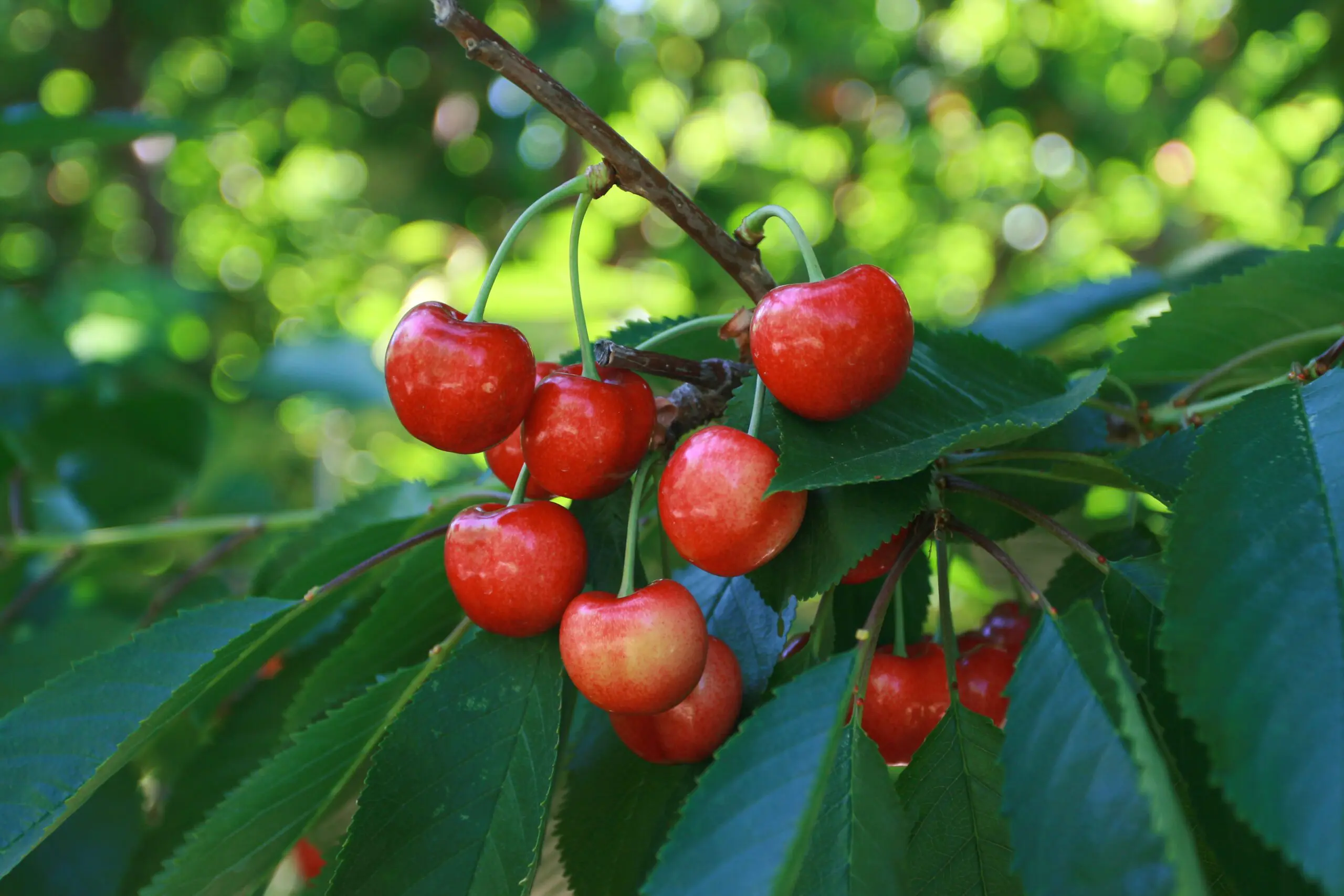Post-harvest nutrient management plays a crucial role in influencing the growth and development of tree fruit. There is a relatively short window for applying fall fertilizers in cherry trees while the leaves are still green and actively conducting photosynthesis. The irrigation cycles should be adjusted to allow solubilization and movement into the soil profile while preventing any potential leaching or runoff. This helps in ensuring that the essential nutrients are appropriately distributed to support the tree’s health. The cherry tree typically begins to bloom before leaves emerge in spring when the soil is still cold which inhibits nutrient uptake. During this early spring period, the plant relies on stored nutrients to support crop development. Therefore, the application of fall nutrients becomes crucial to fulfill these early-season requirements. Towards the end of the season, the trees experience reduced nutrient levels due to nutrients being taken by the harvested fruits. Consequently, the post-harvest phase becomes the important time for applying fertilizers to replenish the nutrients and prepare the crops for the upcoming season.
Fall applications of fertilizers are particularly advantageous as trees are actively absorbing nutrients during this period. In contrast, cold and wet conditions in the spring may delay dormancy break, affecting nutrient uptake efficiency. In addition, post-harvest fertilization helps trees in recovering from harvest stress. This not only replaces the nutrients lost during harvest but also offer an opportunity to address any nutrient deficiencies before the next growing season.

Functions of Key Nutrient Elements
The most essential nutrients for tree growth and development are nitrogen, phosphorus, and potassium, each playing crucial roles. Nitrogen is one of the key macronutrients and is required for several different plant metabolic processes supporting tree growth. After budburst, vegetative growth primarily relies on stored nitrogen in the form of amino acids. Phosphorus is particularly needed early in the season to support cell division, root, and blossom development and to facilitate for next year’s dormancy break. Potassium is essential for winter hardiness and plays a significant role in water and nutrient uptake, and assimilation. Magnesium is another vital nutrient necessary for photosynthesis, as it is a key component of chlorophyll. Calcium, on the other hand, contributes to fruit firmness and cell wall structure, being an important component of pectin. Micronutrients such as boron and zinc also play important roles in tree health. They are crucial for achieving uniform budburst and aiding in flowering and fruit set. Additionally, these micronutrients are essential in developing healthy floral parts, pollen tubules, and facilitating calcium translocation within the tree.
Nutrient removal in relation to cherry fruit yield
| Nutrient | lbs/US ton |
|---|---|
| Nitrogen | 4.3 – 4.8 |
| Phosphorous | 0.71 – 0.86 |
| Potassium | 4.2 – 6.0 |
| Calcium | 0.3 – 0.4 |
| Magnesium | 0.2 – 0.4 |
| Sulfur | 0.3 |
Source: Sallato and Whiting, 2022 (WSU Extension)
Selection of fertilizers
Through careful adjustments to fertilizer composition, the efficiency of fertilizers can be significantly enhanced. This requires relying on accurate and regular soil tests to obtain precise nutrient recommendations. By identifying and addressing nutrient deficiencies, these approaches lead to optimized fertilizer utilization.
Soil analysis is crucial for understanding the specific fertilization needs of each orchard, as different fields have unique requirements. Most soils can be analyzed for radially available nutrients (RAN) or root exchangeable nutrients (REN). For soils with concerns about salinity and sodicity, a combination of radially available nutrients (RAN) and root exchangeable nutrients (REN) tests is recommended. Based on the soil reports, it is advisable to slightly increase potassium and nitrogen rates for high-yielding varieties. When an orchard requires high potassium and magnesium levels, a combination of readily available and relatively slow-release fertilizers is recommended. Special attention should be given to selecting appropriate phosphorus fertilizer sources, especially for high-pH soils. Similarly, a higher rate of humic and fulvic acids is recommended for soils with high sodium and soluble salts.
Balancing the ratios of key elements is also crucial in addition to addressing nutrient deficiencies. Post-harvest fertilization plays a vital role in preparing for the upcoming crop season. This period is favorable for nutrient uptake since the trees remain active, allowing roots to absorb the applied nutrients. These absorbed nutrients serve as reserves for the following growing season.
Summary
The nutrient and carbohydrate reserves play a crucial role in supporting early vegetative growth in cherries. These storage nutrients are essential for sustaining growth during stressful periods, dormancy, and the initiation of growth in the spring. It is important to find the right balance of nutrients to promote both vegetative and reproductive growth for consistent and quality fruit production. Through effective fertilizer management, the goal is to produce healthy trees with moderate vigor and high-quality fruit. The nutrients applied after harvest is mainly stored in perennial tissues and does not significantly contribute to current season growth. Instead, trees primarily rely on nutrient remobilization from root and trunk storage, with around 60% of this remobilization occurring during the first three weeks after bud break. The process of remobilization involves using stored nitrogen to supplement the nutrient supply from the soil. This highlights the importance of remobilization in supporting early-season growth.
References
Neilsen D. and G. Neilsen. 2005. Fertigation of deciduous fruit trees: apple and sweet cherry. Optimizing the Utilization of Water and Nutrients. CAAS International Symposium.
Sallato, B. 2023 (updated). Nutrient Management in Sweet Cherries. WSU extension.
Neilsen D. and G. Neilsen 2008. Managing Nutrition for High Density Apple and Sweet Cherries. USHA Convention.
Bodh Paudel // Tech Nutrition Agronomist

